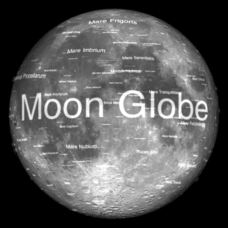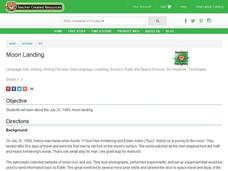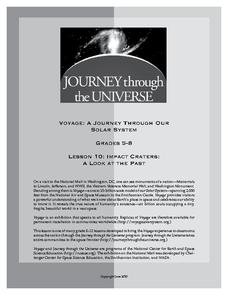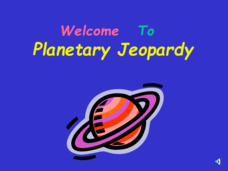Midnight Martian
Moon Globe
Not just a simple globe of the moon, this interactive version allows you to choose lighting according to the location of the sun, views from different positions on Earth, and more! Satellite images and topographic data have been combined...
Curated OER
Apollo Moon Landing
Young scholars explore paper rockets, learn about the Apollo Program and Apollo spin-offs, and use simple office supplies to design and create a new useful product. This amazing plan is incredibly well written and leads students through...
Curated OER
Moon Landing
Students research about the July 20, 1969, moon landing. They demonstrate their knowledge of the first moon landing by creating peek-a-boo rocket books. Also they can make their own moon rocks with an easy-to-make dough.
Curated OER
The Moon's Phases
In this science worksheet, students visit a specified Web site which allows them to discover the phase of the moon on any date in history. Students record the moon phase for the day of their birth, the first moon landing in 1969 and on...
Curated OER
Regents High School Examination: Physical Setting Earth Science 2010
Every topic under the sun is covered in this New York State Regents High School Examination. With the focus of earth science, participants answer 85 quesitons about the solar system, geologic time, rocks and minerals, landforms, and...
Curated OER
Regents High School Examination: Physical Setting Earth Science 2009
Junior geologists address 50 multiple choice questions and 35 short answer questions about the earth system. Plenty of visuals are included for interpretation: diagrams, graphs, maps, photographs, laboratory setups, weather symbols, and...
Curated OER
Activity on United States Moon Landing: Apollo 11
High schoolers use the World Wide Web to access additional information needed to complete a set of questions. They demonstrate an understanding of latitude and longitude by interpreting a lunar map.
Curated OER
Moon Reading Comprehension Activity
In this moon reading comprehension learning exercise, students read a 1 paragraph selection pertaining to New Year's Eve and then answer 3 multiple choice questions regarding the information.
Curated OER
Life on the Moon
Students study the physical properties of the Moon. In this life on the moon lesson plan students describe the ways life on the Moon would be different than on Earth.
University of Colorado
Happy Landings: A Splash or a Splat?
Huygens spacecraft landed on Saturn's moon Titan in 2005, making it the farthest landing from Earth ever made by a spacecraft. In this hands-on activity, the 12th installment of 22, groups explore how density affects speed. To do this,...
Curated OER
Flight of the Future/Space Flight
Students explore space science by viewing videos on YouTube. In this moon landing instructional activity, students view clips of Neil Armstrong taking his first step on the moon and discuss the space race between the U.S. and Russia....
University of Colorado
Distance = Rate x Time
Every year, the moon moves 3.8 cm farther from Earth. In the 11th part of 22, classes use the distance formula. They determine the distance to the moon based upon given data and then graph Galileo spacecraft data to determine its movement.
Journey Through the Universe
Impact Craters: A Look at the Past
The Galle crater on Mars is also known as the Happy Face crater because of its appearance. First, scholars use pebbles and flour to simulate craters and study their properties. They then apply this knowledge to help decipher the history...
Curated OER
Team Moon
Learners read "Team Moon: How 400,000 People Landed Apollo 11 on the Moon," by Catherine Thimmesh. They watch portions of the movie "Apollo 13." Students use the internet and the attached study guide to discover specific information...
Curated OER
Lunar Learning
Students learn about the phases of the moon. In this moon phases lesson, students learn about what causes the moon to look different to us everyday and how the Earth and Sun's position determine what phase the moon is in.
Curated OER
Settlement Exploration: Then and Now
NASA has crafted an imaginative and memorable series of lessons, "NASA and Jamestown Education Module." This lesson is one of the five components. In it, middle schoolers connect history and science by comparing the settlement of...
Curated OER
An Exploration on the Moon
In this Google Earth worksheet, students search the site and answer short answer questions about the moon. Students answer 18 questions.
Curated OER
Astronomy and Me: Moons Over New Haven
Third graders study the features of different moons orbiting the planets. In this astronomy lesson, 3rd graders explore the different phases of the moon using an interactive online website. They compare and contrast the features of the...
Curated OER
Mars Landing Site
Students, through the use of candy bars at room temperature, explore the problems selecting a landing site on Mars.
Curated OER
The Apollo-11 Landing Area at High-Resolution
In this moon crater learning exercise, students use images of craters taken from the Lunar Reconnaissance Orbiter to determine the size of the craters. This learning exercise has 6 problems to solve.
Curated OER
Planetary Jeopardy!
Space Science can be so much fun, especially when you play Planetary Jeopardy! This game tests students on what they know about Roman Gods, the planets and moons in our solar system, and the Earth's rotation.
Space Awareness
Meet Our Home: Earth
Earth is a complex structure. Learners explore their home, the earth, using a fun hands-on activity. They create tactile models of the earth using ordinary household materials that represent some common features: land, polar caps,...
Curated OER
Observing and Sketching the Lunar Surface
Young scholars explore space science by conducting an illustration activity. In this lunar lesson, students discuss what the moon is and the role it plays for our environment on Earth. Young scholars view images of the moon and utilize...
American Association for the Advancement of Science
Gravity Launch
Getting a ship into orbit isn't rocket science. Oh, wait...that's exactly what it is! Learn the basics of the concepts of thrust, launch angle, and gravitational pull in this fun and progressively challenging game.


